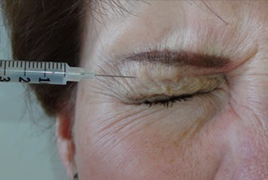Botulinum toxin type A (BT-A) is used in the treatment of neuroophthalmologic disorders such as essential blepharospasm and facial hemispasm for more than 20 years. Although the long-term effect of repeated application of the BT-A was confirmed, the BT-A effect on tears production and retention is not clear. In our work we investigated whether applied BT-A in patients with blepharospasm and hemifacial spasm affect tears production. Tears quality was measured with Schirmer’s and tear osmolarity test during neuro-ophthalmologic diseases treatment, which was evaluated before and 14 days after application of BT-A (Botox inj, Allergan, Irvine, USA) into the orbicularis oculi muscle. BT-A doses of 16-18 U with unilateral and 32 to 36 U bilateral applications were used.
The mean tear production in Schirmer’s test before BT-A application was 8.38 ± 0.63 mm, and 2 weeks after BT-A application was 7.12 ± 0,6 mm (n = 50). Tear osmolarity was 305.4 ± 9.2 mOsm before BT-A application, and 2 weeks after BT-A application it was 305.2 ± 8,6 mOsm (n = 13). We found significant difference between two groups in tear quantity (p < 0.012), but not quality (p > 0.05). Application of the BT-A reduced the amount of tears measured by Schirmer’s test. These results confirm rational basis of the empirical clinical experience where an artificial tears substitution is recommended for patients with neuro-ophthalmologic disorders treated by BT-A.

